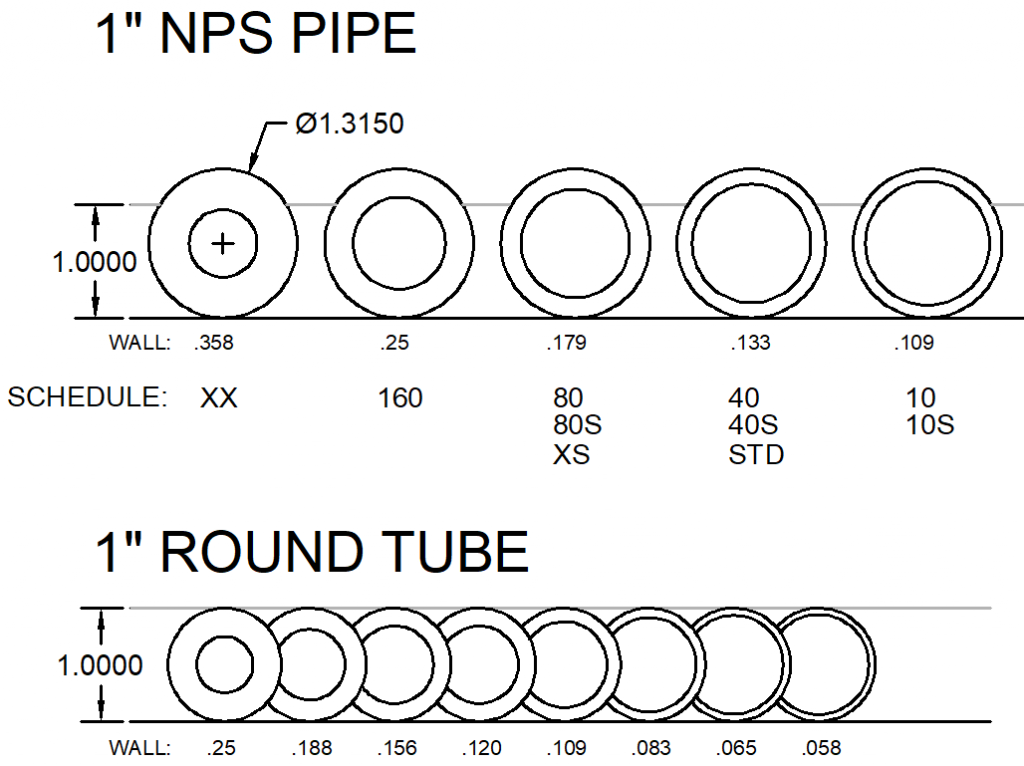Tube and pipe not synonymous. Here are some of the key differences between tube and pipe.
- Shape
- Pipe is always round.
- Tubes can be round or they can be a variety of other shapes such as rectangular, square, hexagonal and more.
- Primary Design Intent
- Pipe is intended primarily to be used to convey fluids, usually under pressure.
- Tube is designed to be used in structural applications.
- However, pipe is often used in structural applications. Structural pipe fittings are made to be used with pipe sizes for applications such as handrails. Tube is often used to convey fluids, especially in small sizes, and particular alloys. For example, small diameter stainless tubing is used for hypodermic needles, and copper tubing is used to transport fluids such water or refrigerant.
- Dimensions
- Pipe is specified by its nominal size (referred to as NPS or nominal pipe size) and schedule (wall thickness). For pipes with a diameter less than 14 inches, the nominal size is only roughly related to the actual size. For pipe sizes 14 inches and larger, the nominal pipe size is equal to the outside diameter (OD).
- Different pipe schedules define the pipes wall thickness. The material is added to the inside of the pipe, so for the same nominal pipe size, the outside diameter is the same.
- Tube is specified by outside dimensions that are the actual size and a wall thickness. In general, there is more variety of wall thickness available in tube that in pipe. Also, tube size tolerances are tighter than those for pipe.

The term pipe is also applied for nonmetallic materials such as PVC, clay, and concrete.


Recent Comments